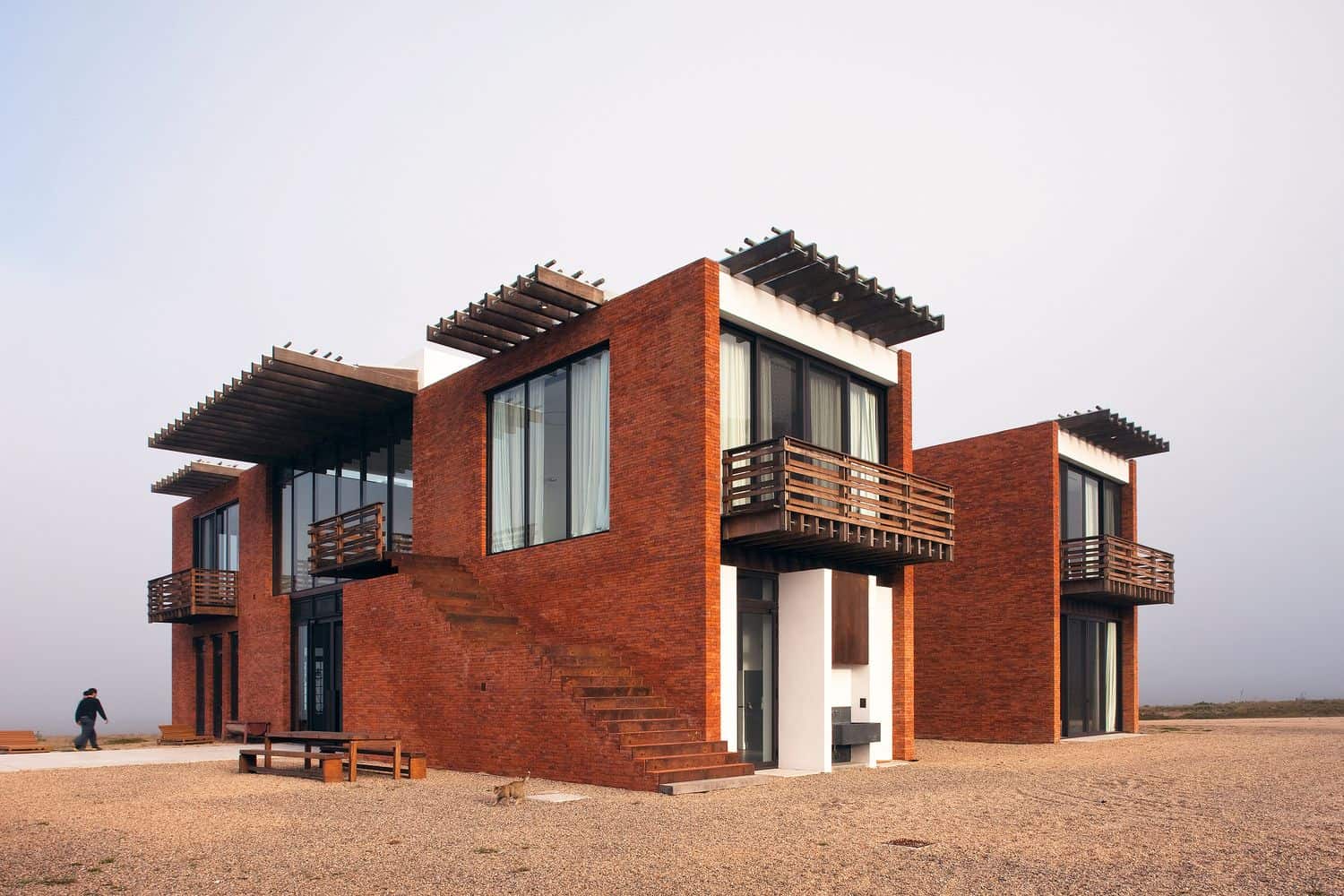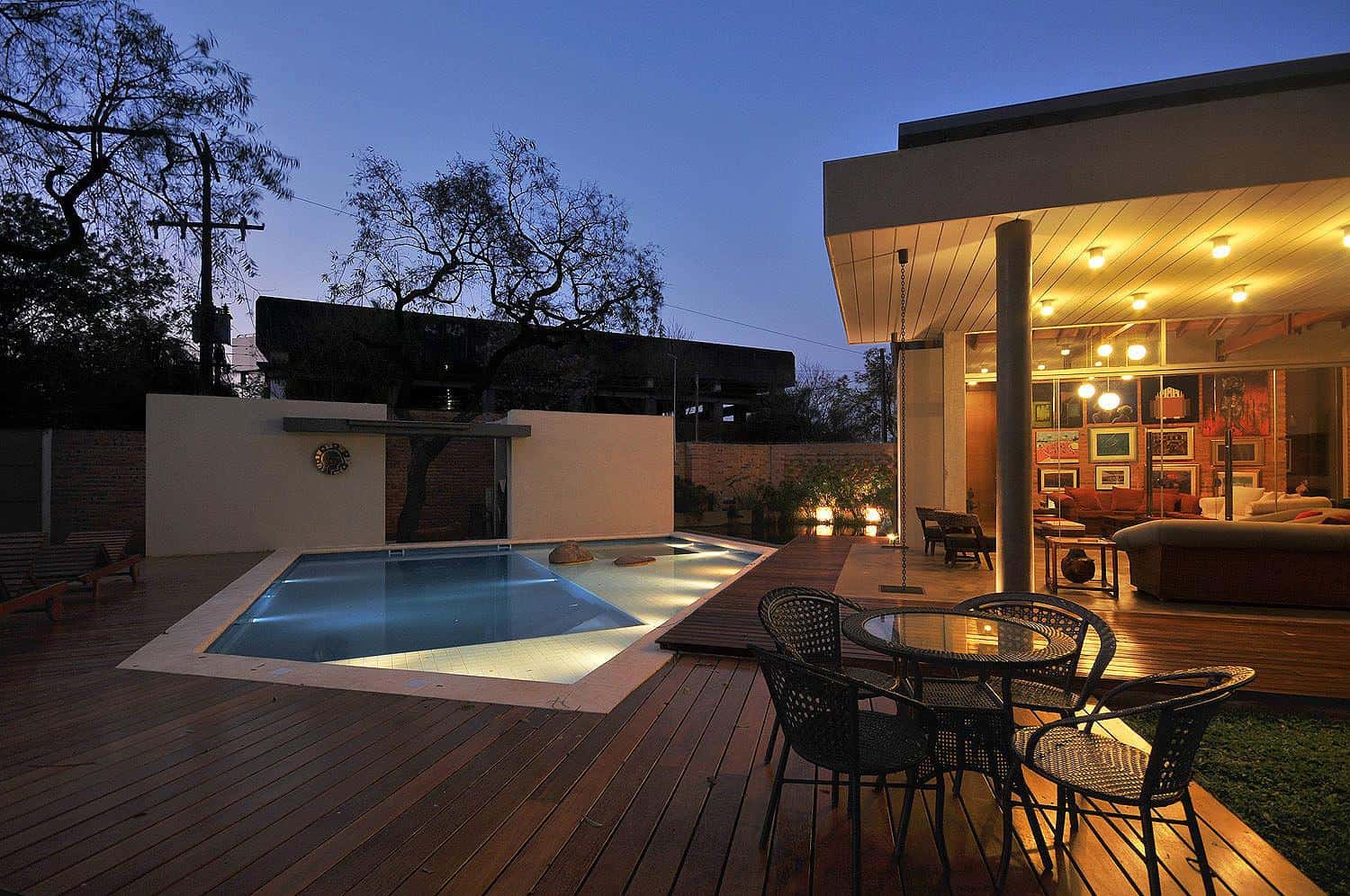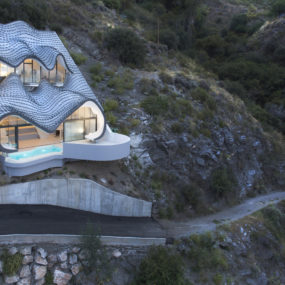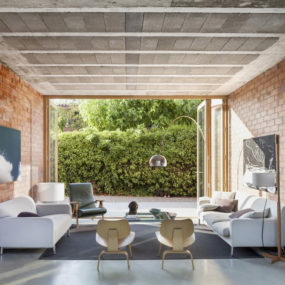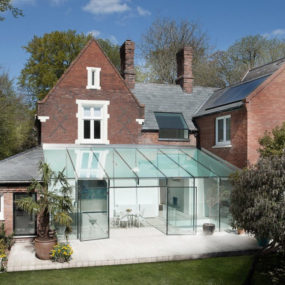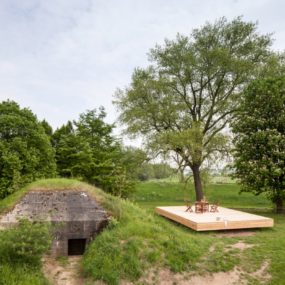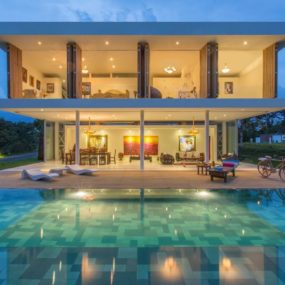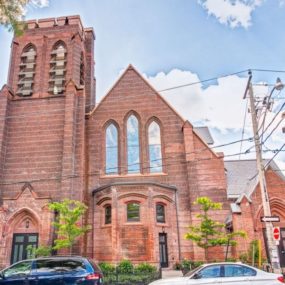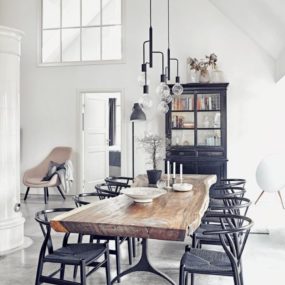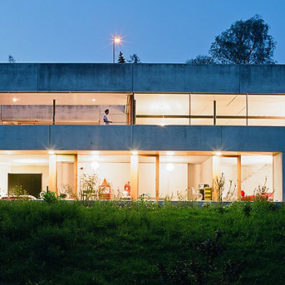Luna Llena House by Candida Tabet Arquitetura is located in Jose Ignacio, Uruguay. Designed as a holiday house for a New York couple with two teenage children. The concept was to create a home that spoke of the American and the Uruguay cultures as well as creating a place for gourmet cooking and a strong sense of graphic motifs. The final result is a holiday house that incorporates 2 cultures without compromising on design and function.

The Uruguay culture is portrayed in the brick masonry while the New York culture is strongly referenced in the open plan layouts and gourmet kitchen. The graphic motifs that where also very important are created with light and shadow as it travels through the various architectural details.

The Luna Llena House is in a remote location, allowing Candida Tabet Arquitetura to create a design that is not restrained by the need for privacy.
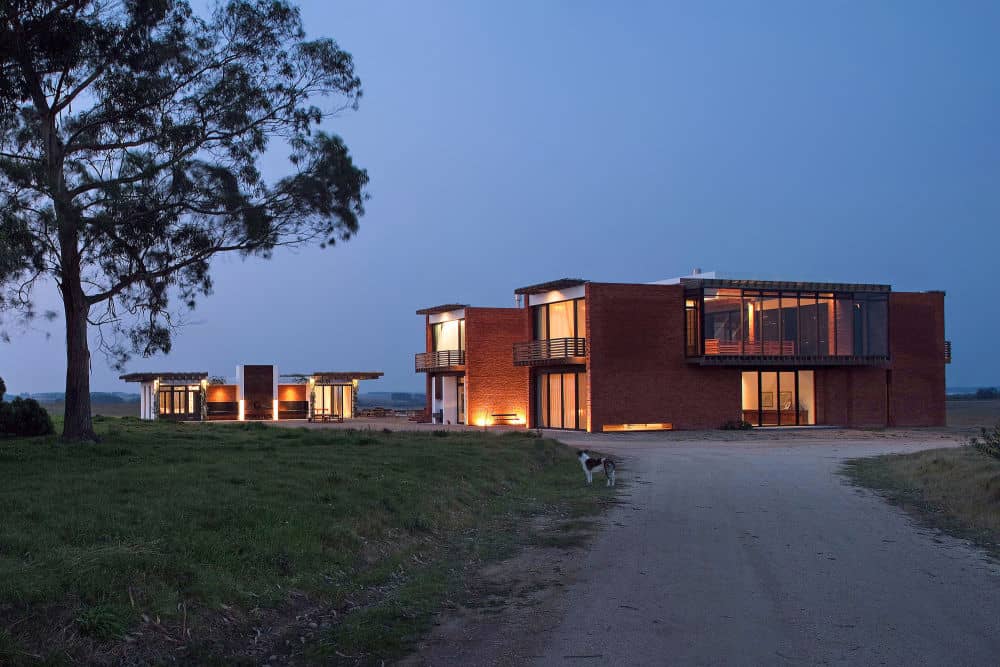
The home is designed with a driveway leading to the main structure. Behind the main structure is a swimming pool and just past the swimming pool is a 2nd building that holds a fitness area on one side, washrooms in the center and a media room on the other side.
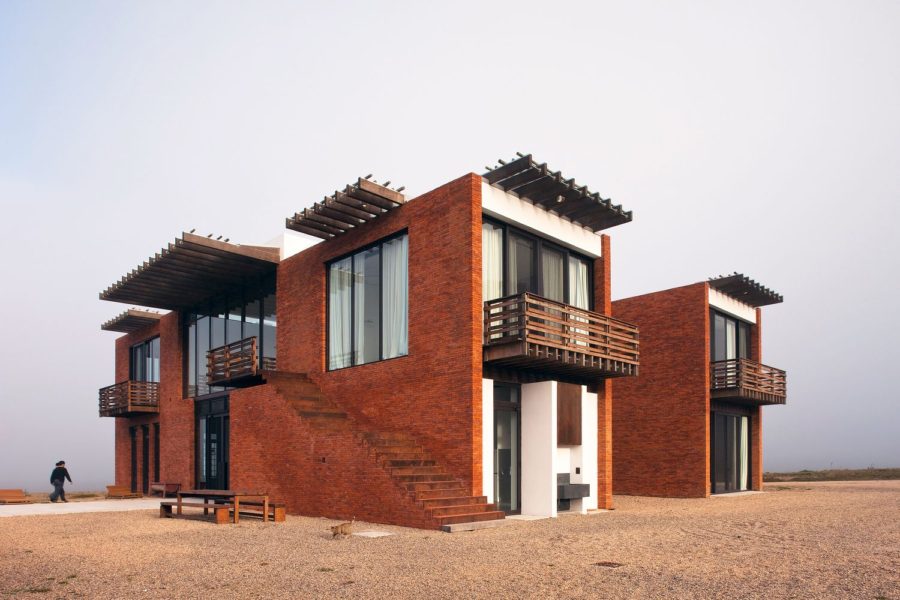
The upstairs of the main structure is a symmetrical design with a bedroom suite in each corner. The bedrooms can be accessed from inside the home or by an outside brick stairwell.
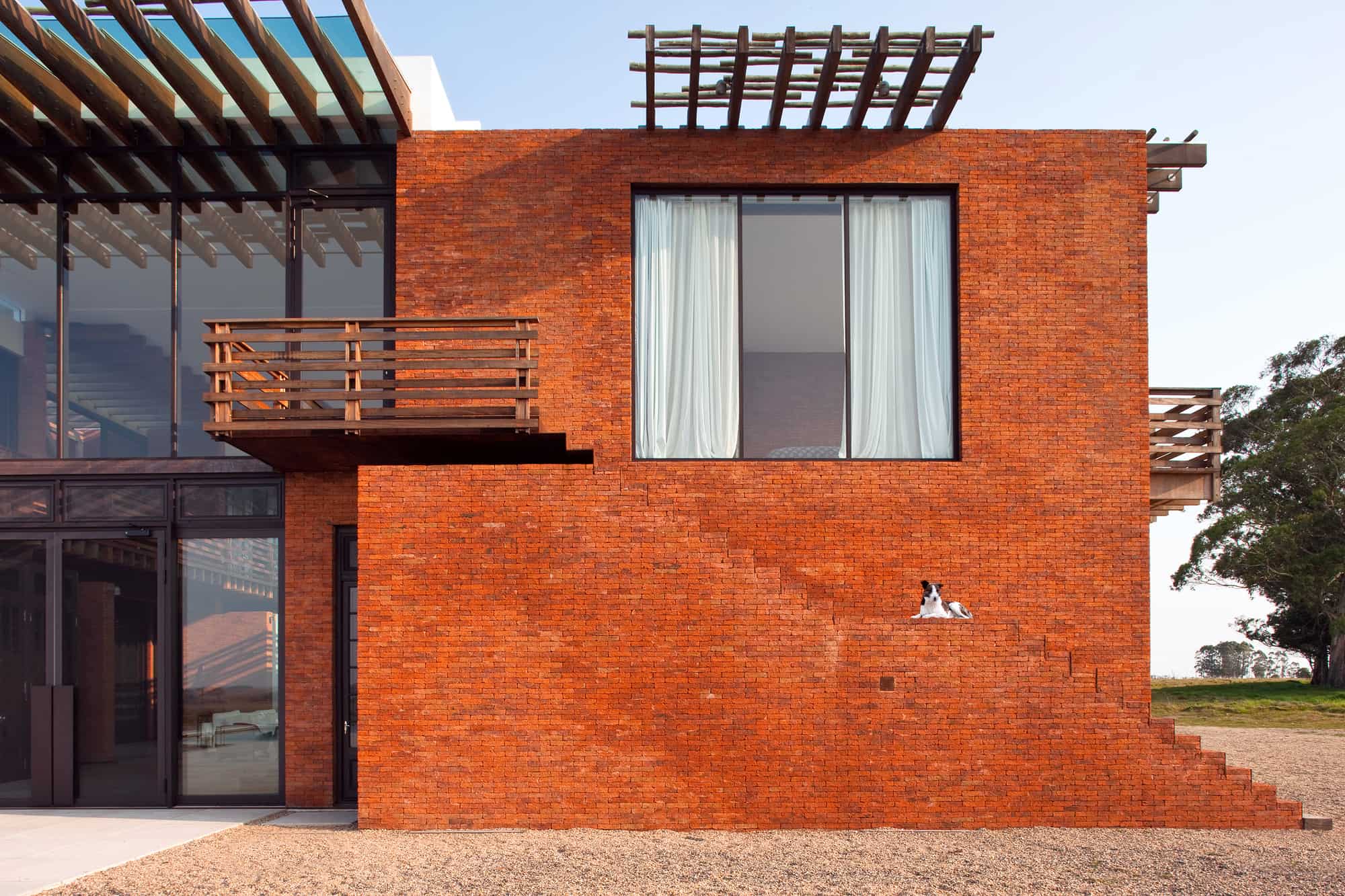
The design of the brick stairwell is such that from a distance it blends completely into the exterior facade that it becomes invisible – except for the 6 stairs that extend past the corner of the volume.
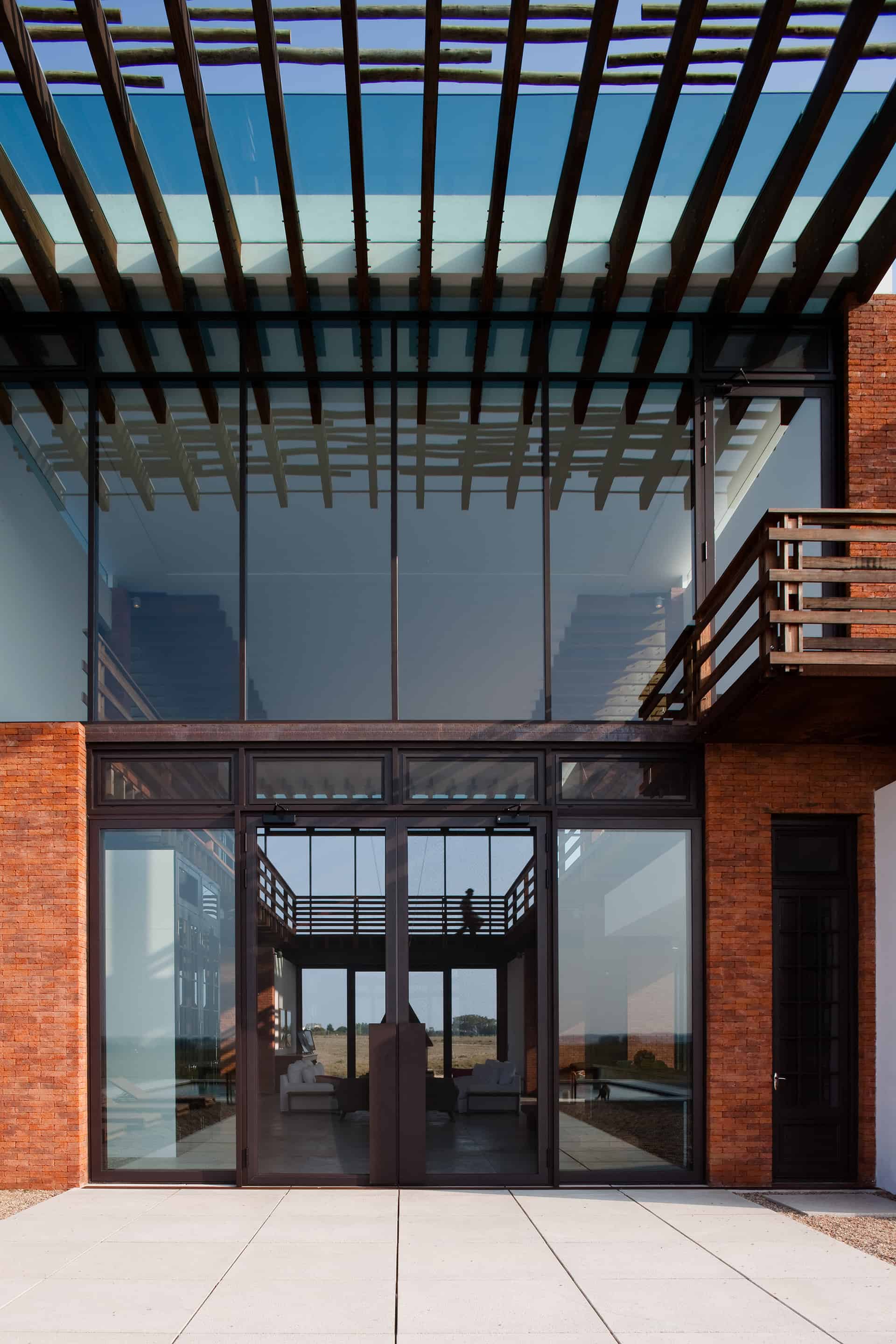
Just to the left of the stairwell is the main entrance to the home, designed symmetrically, a large suspended fireplace is perfectly lined up with the center of the two glass doors.

The Fireplace is a wood burning design and is located in the foyer for ease of loading. Just past the fireplace is the living room with a mezzanine above that surrounds and defines the space.
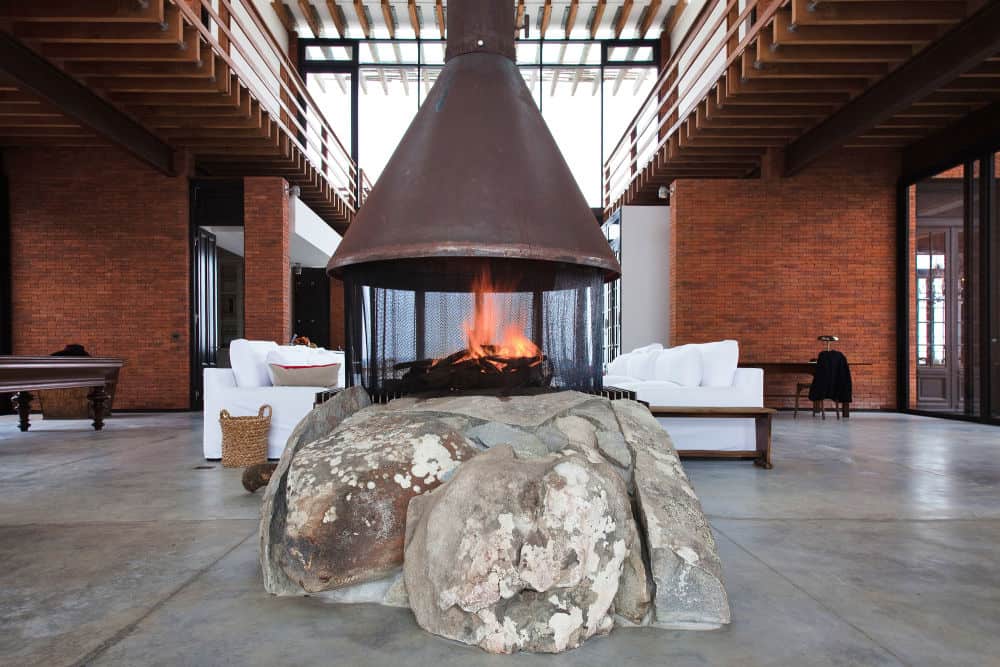
The fire pit is a unique design with the base created by a large boulder.

The fireplace is in front of the living room, a pool table is on one side and an outdoor dining area is on the other while a 2nd back foyer is behind it, leading out to the swimming pool.
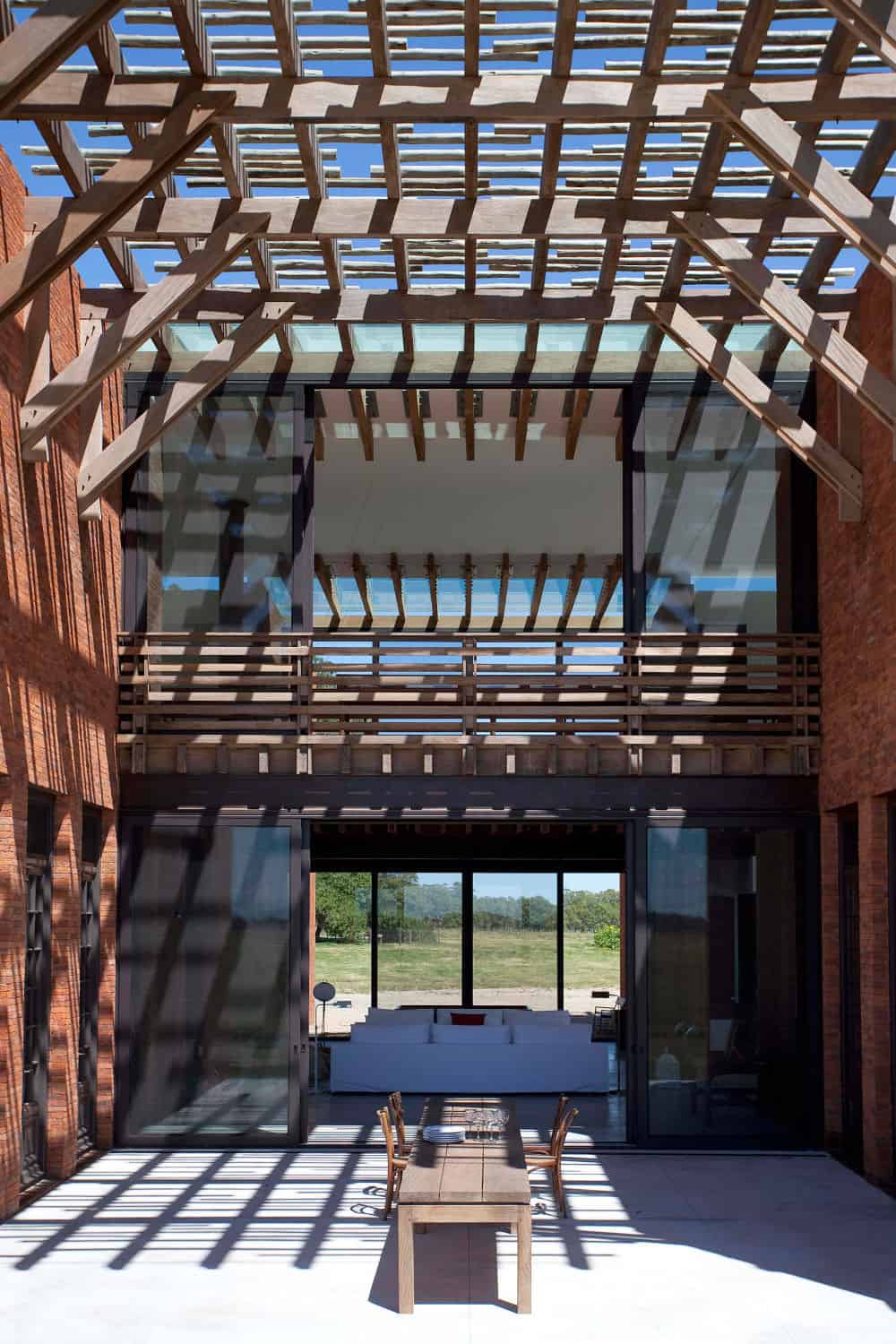
As with the mezzanine and the shade arbors over each window, the al fresco dining area is covered in shade producing wood slats that create strong graphic patterns when the sun passes through them.

The al fresco area is located between the large gourmet kitchen and the just as large dining room.
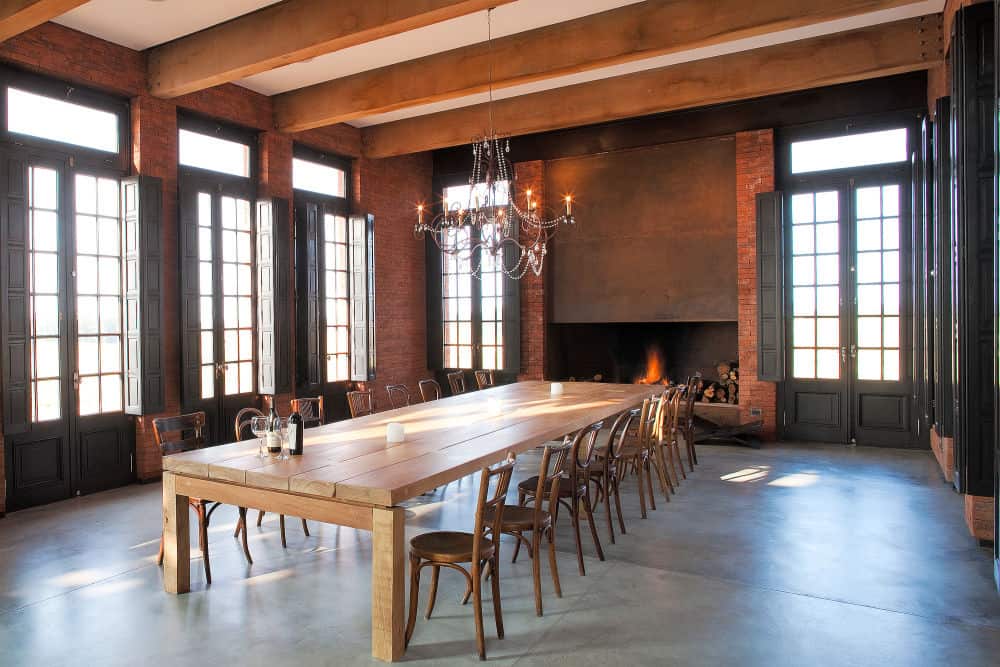
The dining room features an amazing, custom plank top table that is capable of sitting 20 people at a time – WOW!

While the dining room is connected to the kitchen via the al fresco area, it is also connected via the pool foyer at the back of the living room.

The kitchen is a chef’s dream with top of the line appliances, large prep stations and a relaxed country aesthetic that is both warm and inviting.
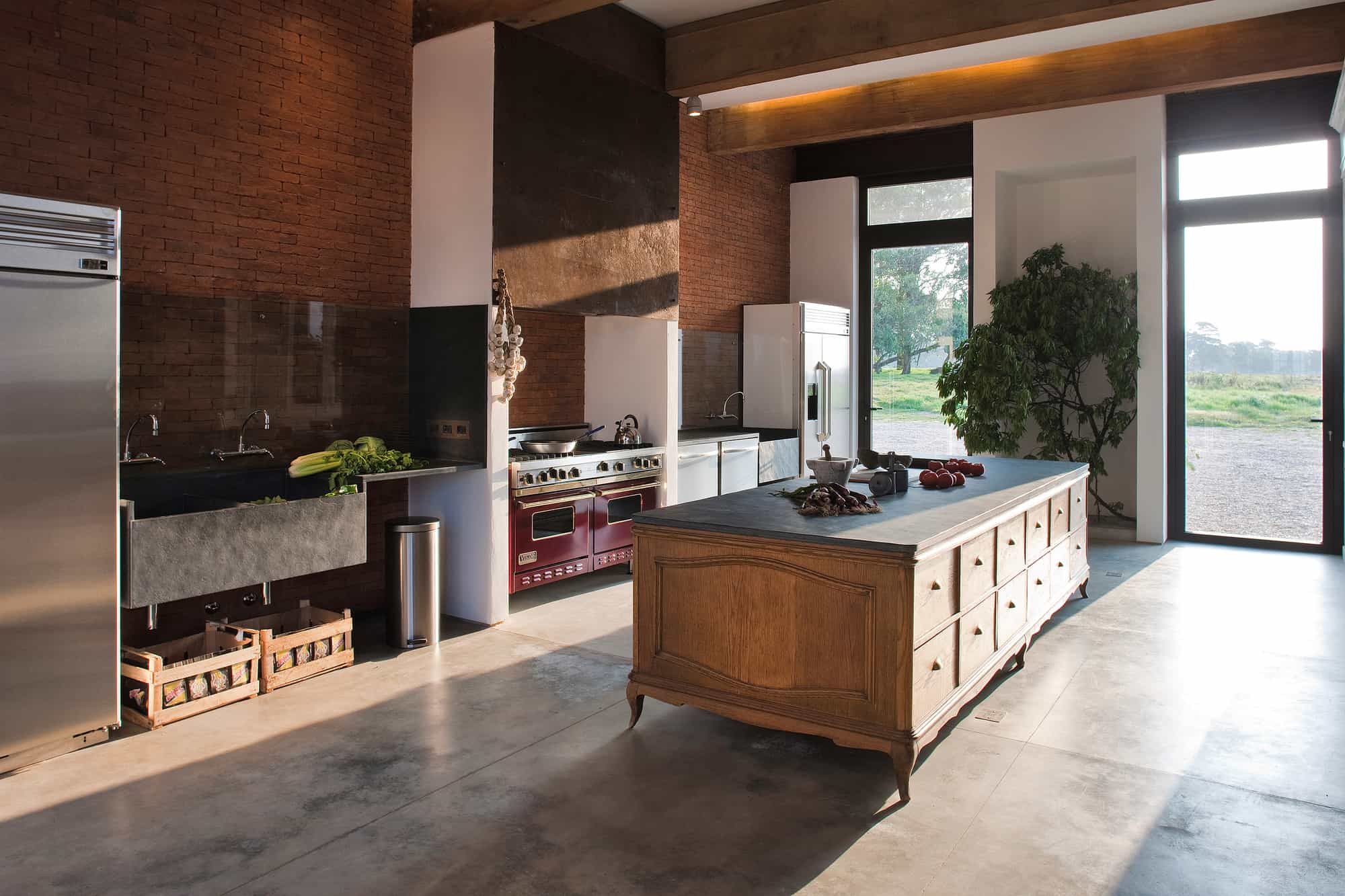
Not only are the appliances top of the line, they are also singularly huge / installed in multiples / or both – no wonder with a dining table that seats 20.

The pool foyer (between the kitchen and dining rooms) is designed similarly to the main foyer but without the fireplace. Here a pair of glass doors is lined up symmetrically with the terrace and the pool beyond.
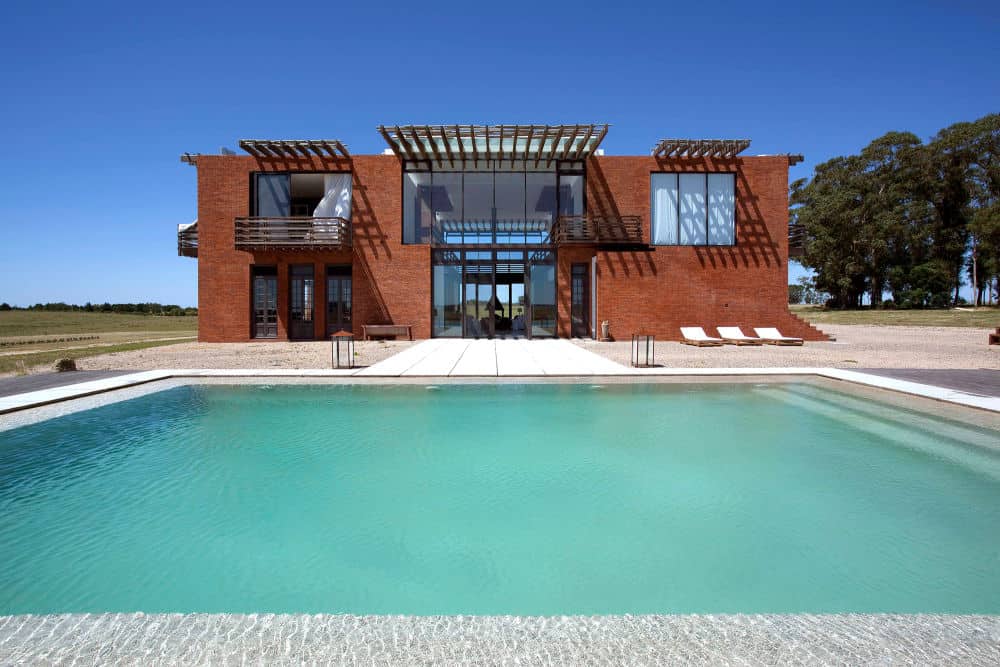
While there is no fireplace in the pool foyer, the fireplace is still a strong part of the visual from the pool itself and while Luna Llena House is not symmetrical on the lower half, the two bedrooms overlooking the pool, the windows and the dead center fireplace give the impression of complete symmetry.
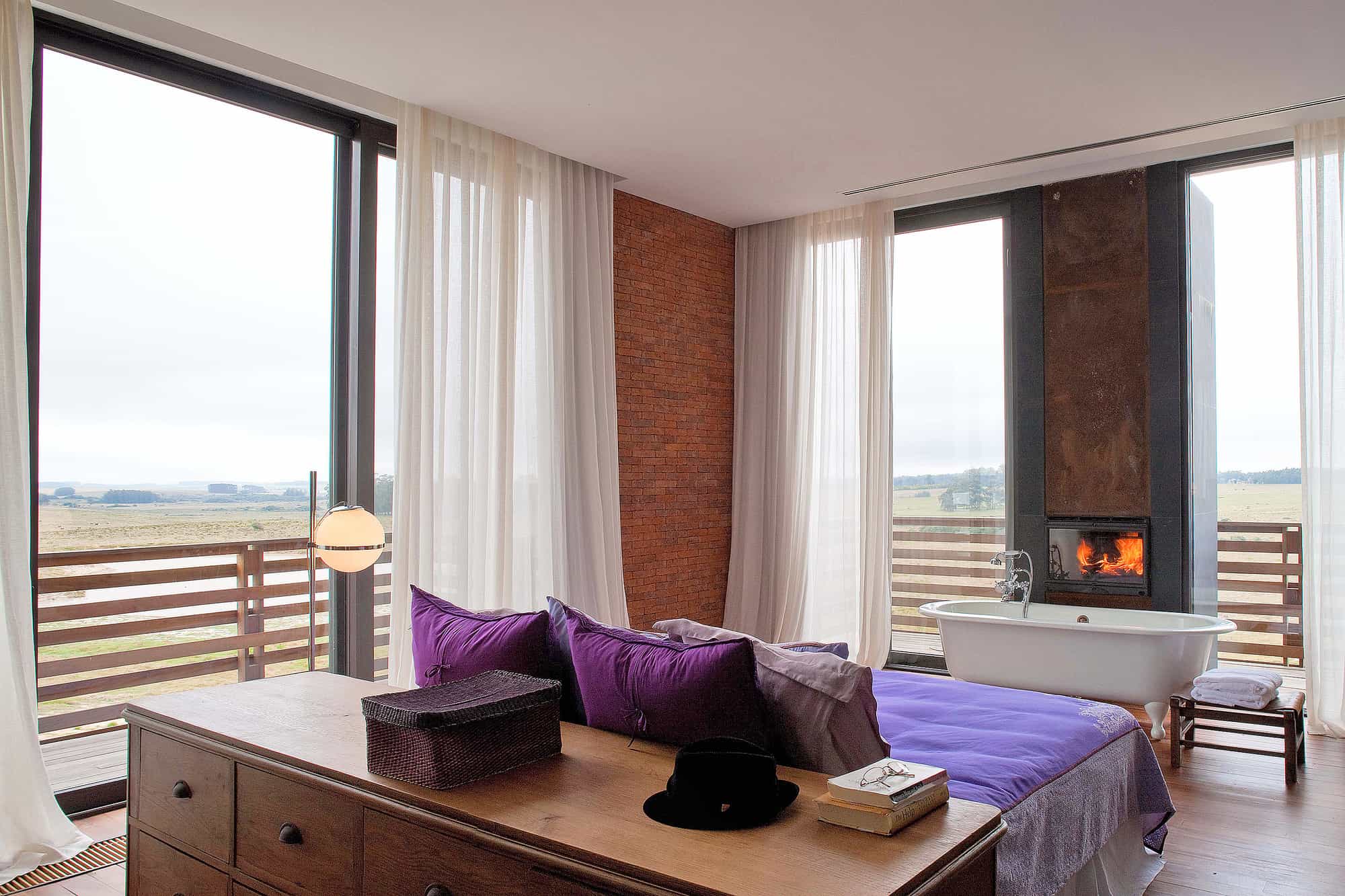
2 of the bedrooms have a freestanding, claw foot bathtub within the sleeping zone while the other 2 have the tubs contained in their ensuites.
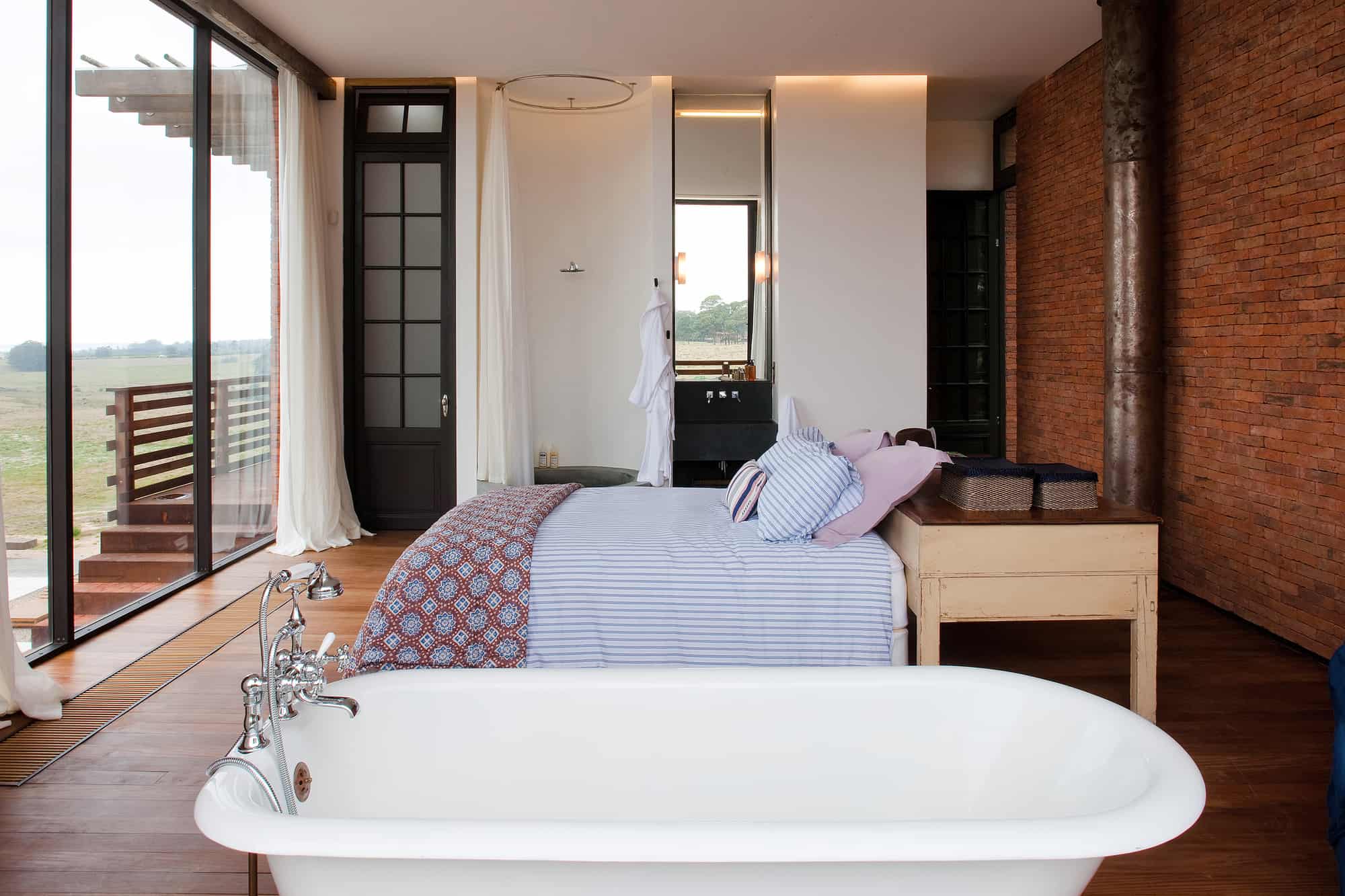
The brick masonry is as much a part of the bedroom designs as it is the facades of the volume.

Aside from bedrooms, the upstairs also has hammocks suspended from one of the terraces.
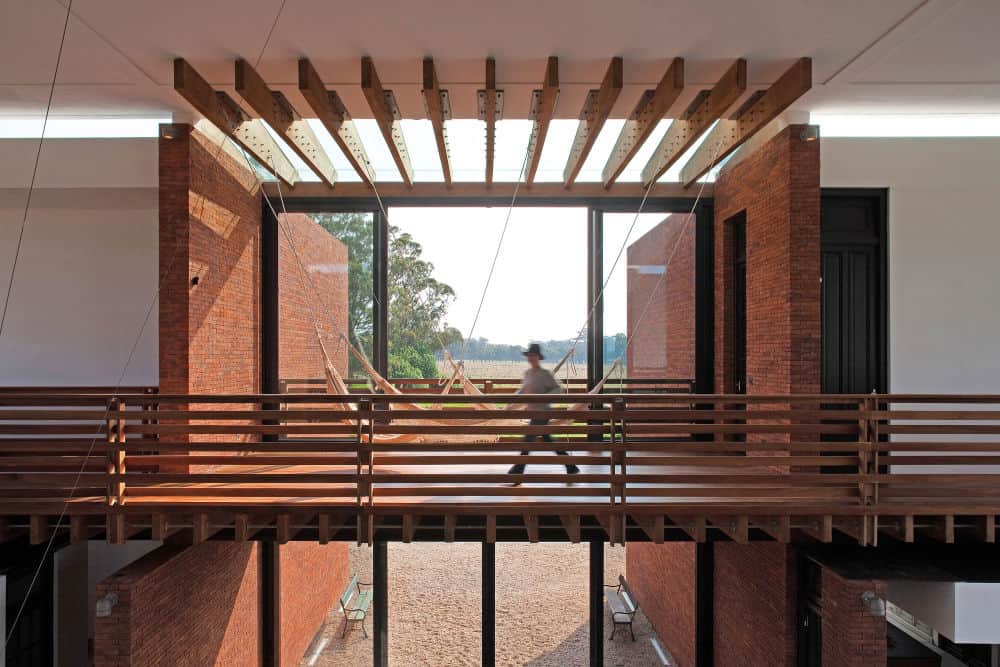
The terrace mimics the style of the mezzanine that travels around the living room below.
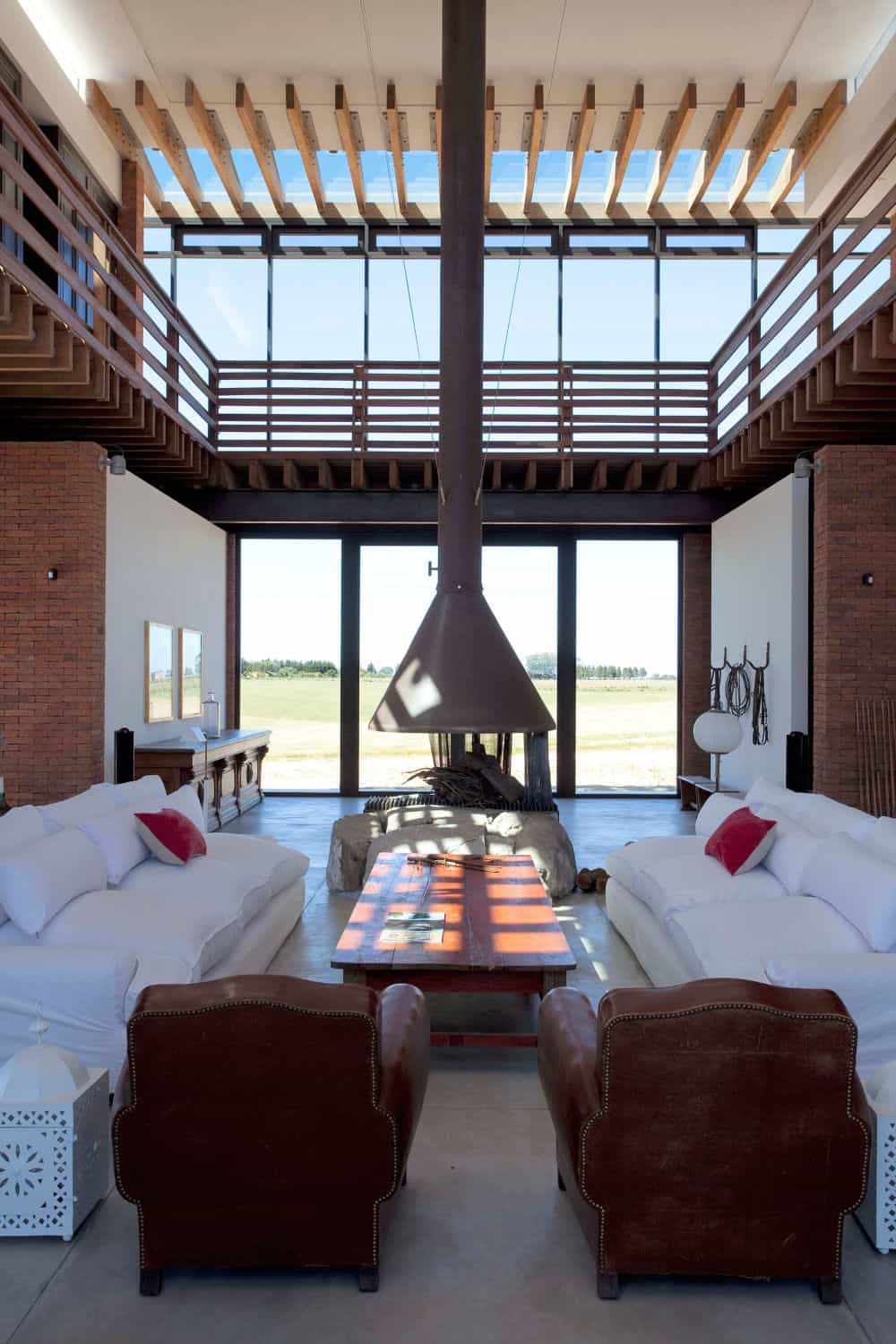
The mezzanine is supported by metal inserts as they cantilever out from the walls they travel across. The mezzanine and the layout of the home are all based on a transverse and a longitudinal axis.

The geometry of the layout helps define the graphic motifs that are created by sun and shadow as they dance around the open wood structures above.
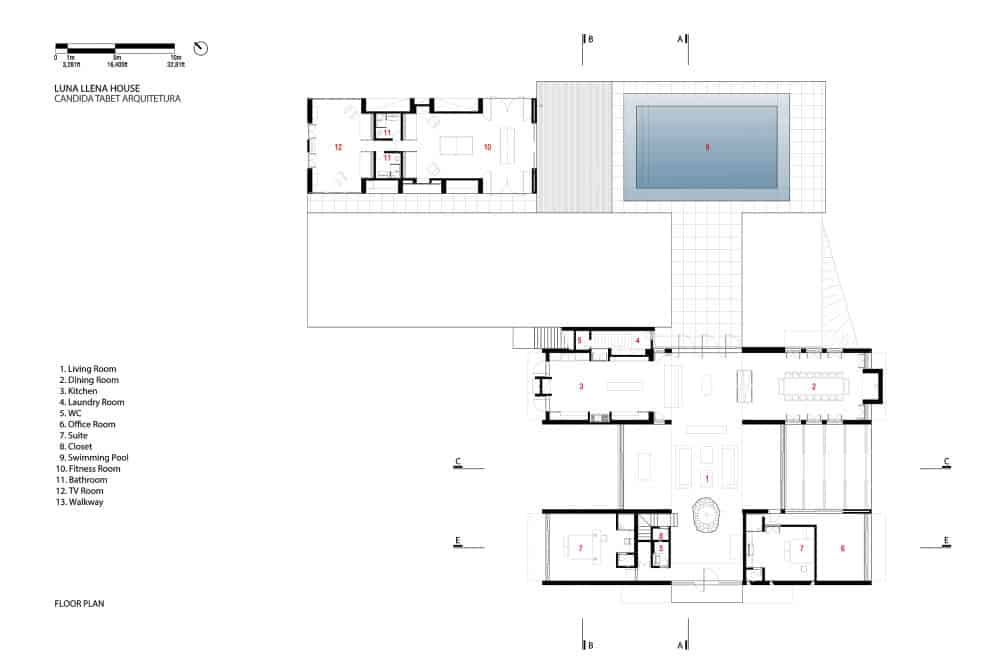
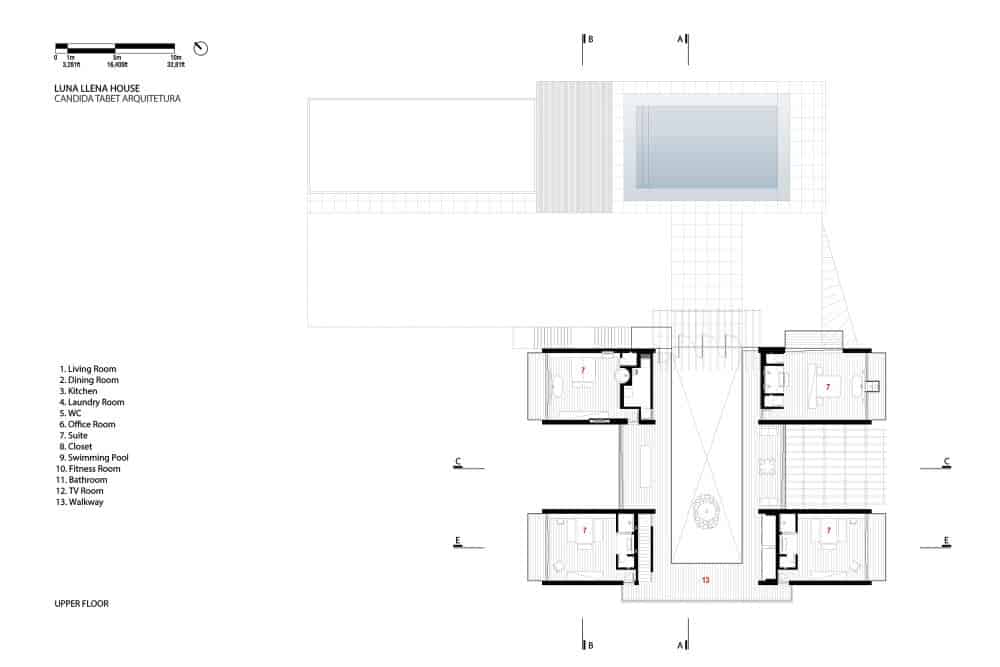
Candida Tabet Arquitetura.
Photography by Cristiano Mascaro, Tuca Reines, Fran Parente, Romulo Fialdini.
While brickwork is a strong part of the Uruguay architectural culture it is also a form of architecture found in other countries, whether current or from era’s gone by such as this Victorian Coach House in England or this brick country home located in Russia.
